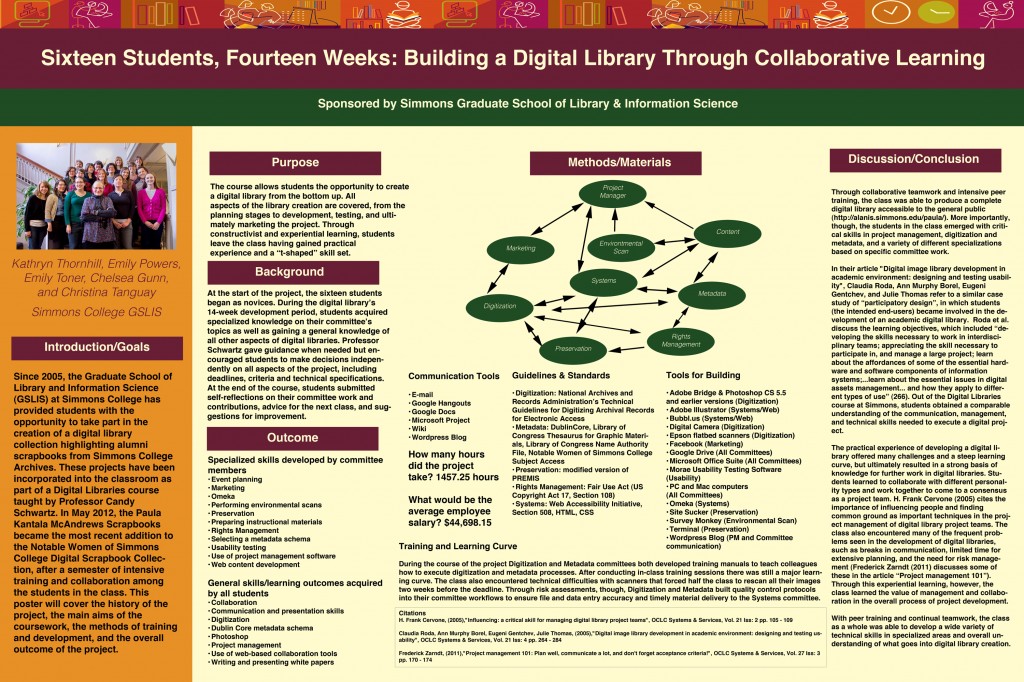Digital Liaisons: Shifting Borders in Interdisciplinary Collaboration
At the 2012 ASIS&T Annual Meeting, the SIG Digital Libraries hosted a panel exclusively featuring posters and presentations by master’s and undergraduate students on topics pertaining to interdisciplinary collaboration. This event was intended to acknowledge the presence of ASIS&T student members by providing a venue specifically for master’s and undergraduate students to present independent research on topics related to information and knowledge management. In recognition of limited student funding, participants were allowed to present in absentia through video presentations and mailing in posters. The event also served as a social meeting point to facilitate networking between students, faculty, and professionals.
SIG DL would like to share the excellent work by our presenters through this webpage. Below, you can learn more about the backgrounds of the presenters, view videos from the panel, and review supplementary material. For any questions, please feel free to contact SIG DL at asist.sigdl@gmail.com.
Link to abstract
Link to Photo Album
Poster Session
“Data” Is Not Enough: Case Studies in Managing and Preserving Digital Research Outputs
Elizabeth Rolando, Rachel Mandell – Best Poster (tie) – Georgia Tech, UCLA
Cloud computing is already a reality in many libraries around the world and it “refers to both the applications delivered as services over the Internet and the hardware and systems software in the data centers that provide those services” (Armbrust et al., 2010, p. 50). Breeding (2012, p. 2) states that “the term cloud computing is used quite freely, tagged to almost any type of virtualized computing environment or any arrangement where the library relies on a remote hosting environment for a major automation component”.
The technologies associated with cloud computing can be classified in three main categories: infrastructure as a service (IaaS), platform as a service (PaaS) and software as a service (SaaS). In libraries’ environment, it is commonly used as Saas (for instance, Alma, WordShare and Summon, are services that provided…) but also as IaaS where instead buying hardware, the institution only rent servers in the cloud. As highlighted by Romero (2012, p.111) adoption of cloud computing approaches could report significant benefits to libraries, namely: cost reduction, scalability, lower investment, reduced risk, included support and greater security and accessibility.
This new trend is affecting directly the way that libraries around the world are addressing digital preservation issues, as they need to ensure the perdurability of data. In the case of Brazilian libraries, further reflection is still needed. Even though public and universities libraries are starting to use cloud services, the fact that the government funds them, poses the challenge of the request for bids, enforced by the Brazilian legislation for every product or service that cost more than R$8.000,00 (about U$3478,00). If this process was to fail, and another purchase process was to be initiated, the service and/or the storage of data are not guaranteed.
The poster will present preliminary results of a survey addressed to the librarians and IT analysts of the three largest public universities in São Paulo State: São Paulo University, University of Campinas and São Paulo State University. The main aim of this research is to determine the main reasons for the low penetration of cloud services in Brazilian libraries, whether they are solely related to the legal barriers or there are other technological, social or cultural reasons, as the librarians’ reluctance to embrace disrupting approaches as this one. The study also reflects on the opportunities and challenges of cloud based digital preservation practices in Brazilian libraries, with the aim of ensuring long-term and safe storing of their data, while staying within the assigned budget and respecting current legislation.
References
Armbrust, Michael et al. (2010). A view of cloud computing. Communications of the ACM, 53(4), 50-58.
Romero, Nuria Lloret (2012). “Cloud computing” in library automation: benefits and drawbacks. The Bottom Line: Managing library finances, 25(3), 110-114.
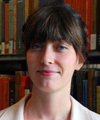 Elizabeth (Lizzy) Rolando is the Research Data Librarian at Georgia Tech, working in the Scholarly Communications and Digital Curation Department in the Library. In this role, Lizzy is working to build out and develop the data services provided by Georgia Tech, while also providing consultation on data management planning and data archiving. Before joining the Georgia Tech Library, Lizzy worked as a Graduate Student Researcher at UCLA under Dr. Christine Borgman studying the data practices of Science and Technology researchers. She received both her MLIS and Bachelor of Science from UCLA. Lizzy is an ASIS&T 2012 New Leader.
Elizabeth (Lizzy) Rolando is the Research Data Librarian at Georgia Tech, working in the Scholarly Communications and Digital Curation Department in the Library. In this role, Lizzy is working to build out and develop the data services provided by Georgia Tech, while also providing consultation on data management planning and data archiving. Before joining the Georgia Tech Library, Lizzy worked as a Graduate Student Researcher at UCLA under Dr. Christine Borgman studying the data practices of Science and Technology researchers. She received both her MLIS and Bachelor of Science from UCLA. Lizzy is an ASIS&T 2012 New Leader.
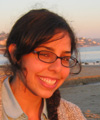 Rachel Mandell is a recent graduate from UCLA’s Library and Information Science Master’s program. While at UCLA, she focused on the management of research data and other forms of research output. She completed a Master’s thesis under the direction of Christine Borgman and the UCLA Library on the requirements and needs of researchers across many academic fields, for the development of the UCLA Data Registry. This new tool facilitates data discovery and reuse on the UCLA campus. Rachel is a native southern Californian, currently living in Konstanz, Germany. When she is not working on her German language skills, she is hiking through the Schwarzwald, learning how to bake local specialties, and is interested in continuing her work and education in the areas of digital preservation, electronic publishing, open access, and the digital humanities
Rachel Mandell is a recent graduate from UCLA’s Library and Information Science Master’s program. While at UCLA, she focused on the management of research data and other forms of research output. She completed a Master’s thesis under the direction of Christine Borgman and the UCLA Library on the requirements and needs of researchers across many academic fields, for the development of the UCLA Data Registry. This new tool facilitates data discovery and reuse on the UCLA campus. Rachel is a native southern Californian, currently living in Konstanz, Germany. When she is not working on her German language skills, she is hiking through the Schwarzwald, learning how to bake local specialties, and is interested in continuing her work and education in the areas of digital preservation, electronic publishing, open access, and the digital humanities
“They’re Doing This for Free?”: Using Crowdsourcing as a Way to Generate User Interest and Efficiently Digitize Collections
Fallon Bleich and Mary Michelle Moore – Best Poster (tie) – Rutgers University
In the current fast paced world of technology, users strive to achieve success in new and interesting ways. Digital libraries, archives, and repositories seek ways to attract users to their unique collections while also maintaining tight budgets. Enter crowdsourcing, a volunteering method that has exploded technologically in the past decade. Why is it so successful? What are users getting out of participating? How can we take this method and apply it to other institutions? The gamification of libraries and archives through crowdsourcing, allows users to interact with materials and concepts that they might not otherwise have access to, such as images of unidentified galaxies (from Galaxy Zoo) or dinosaur bone measurements (from the Open Dinosaur Project). This virtual stimuli not only invites users, but also unites them in their social collaboration. Users also feel a sense of success from being the person to identify that particular galaxy or the person that transcribed the most letters from the Civil War. These results only showcase how popular crowdsourcing has become as a method of digitizing information. I am surveying a variety of different institutions that are currently or have recently used crowdsourcing as a way to enhance their collections and broaden their audience. I have also gathered data from the institutions’ websites and will include it in my results. This survey and its results will explore why institutions are using crowdsourcing, how well it is working/worked for them, and explore why some places have attracted larger crowds than others. The poster will share these results and hopefully show how other digital projects can also use crowdsourcing to showcase their collections.
Fallon Bleich is an MLIS student at Rutgers University [‘13], with a specialization in Digital Libraries. Her previous academic background includes a BA in History from Hendrix College. Fallon is currently the online copresident of the Rutgers ASIS&T group and a circulation assistant at the Bentonville Public Library in Bentonville, Arkansas.
Mary Michelle Moore is an MLIS student at Rutgers University [‘13] with a previous BA in Anthropology from the University of California Los Angeles. She is currently the webmaster for the Rutgers RASL group and a Library Assistant at the University of California-Irvine Library
Conducting a Data Management Audit of a Scientific Research Group
Christopher Eaker and mentors – Special Prize Poster – University of Tennessee-Knoxville
Introduction
As research-intensive science produces increasingly higher volumes of digital data, managing it with long term preservation in mind is more important than ever. Data management has become an often overlooked practice, taking a backseat to the science it supports (Heidorn, 2011; Carlson, Fosmire, Miller, & Nelson, 2011). Libraries and information science professionals can offer valuable assistance in managing that data, as they, historically, have strong skills related to the access and preservation of information and knowledge, such as classifying, describing, distributing, and storing (Pryor, 2012; Jones, Ball, & Ekmekcioglu, 2008).
One such way information science professionals can offer help to their scientific colleagues is by conducting an audit of their data management practices. By conducting an audit, the auditor can identify areas of strength, areas needing improvement, redundant activities, and useful tools. The goal of the data management audit is to increase efficiency and improve data management practices within a research group or project, which will, in turn, support the long term preservation and access of data sets. A data management audit supports the entire lifecycle of data, including Project Planning, Data Collection, Data Analysis, Data Archiving, and Data Distribution and Sharing.
This poster will highlight the skills an information professional needs and demonstrate a practical approach to performing a data management audit. Based on the Digital Curation Centre’s Data Asset Framework (2009) and framed within the data lifecycle, this poster will explain the data management audit process and provide examples of questions asked, data workflow diagrams, and suggestions for improvements. Below are descriptions of the tasks involved in each phase of the audit.
Project Planning
During the project planning phase of the data management audit, the information science professional holds introductory meetings with science project managers. The purpose of these meetings is to determine which groups will be audited and be introduced to project personnel who will be participating in the data management audit. The auditor must obtain Internal Review Board approval, if necessary, before conducting any data gathering interviews.
Data Collection
During the data collection phase, the data collected includes, but is not limited to, surveys of project personnel; internal documents, such as reports and project logs; external documents, such as brochures and websites; and demonstrations of tools.
Data Analysis
The data analysis phase of the data management audit includes processing and analyzing the data collected from the previous phase. Tasks within this phase include transcribing interviews, studying each group’s workflow, and extracting trends and finding gaps in those workflows. Additionally, the auditor should develop a workflow diagram that visualizes and describes the research process in each group audited. Color-coding each phase of the workflow process on the diagram facilitates easy comparison across research groups. Finally, during data analysis, the auditor must consistently consult with project personnel to determine if the workflow diagrams accurately represent the groups’ processes.
Data Distribution & Sharing
Once the analysis is complete, the auditor must produce a final report that outlines key findings and lays out recommendations for improvements. This report is then shared with the project leaders and other project personnel who will determine how to proceed.
Implementation
Implementation of the recommendations contained within the data management audit report is the goal of the data management audit. The recommendations must be useful, reasonable suggestions to improve efficiency, reduce redundancy, and increase quality. Important areas where recommendations may be made include data management planning, metadata, archiving and preservation, and project tracking.
References
Carlson, J., Fosmire, M., Miller, C., & Nelson, M. (2011). “Determining data information literacy needs: A study of students and research faculty.” portal: Libraries and the Academy 11(2), 629-657. The Johns Hopkins University Press.
Heidorn, P. B. (2011). “The emerging role of libraries in data curation and e-science.” Journal of Library Administration, 51(7-8), 662-672. doi: 10.1080/01930826.2011.601269
Jones, S., Ball, A., & Ekmekcioglu, Ç. (2008). The data management audit framework: A first step in the data management challenge. International Journal of Digital Curation, 3(2).
Pryor, G. (2012). “Why manage research data?.” In G. Pryor (Ed.), Managing research data (p. 15). London: Facet Publishing.
 Chris is a second year masters student in the School of Information Sciences at the University of Tennessee, Knoxville (UTK). He comes to the information science profession after a successful career as a civil engineer. He is now specializing in data curation and is a research assistant in the Data Curation Education in Research Centers program at UTK. He plans to become a data curator in an academic research library upon graduation next May.
Chris is a second year masters student in the School of Information Sciences at the University of Tennessee, Knoxville (UTK). He comes to the information science profession after a successful career as a civil engineer. He is now specializing in data curation and is a research assistant in the Data Curation Education in Research Centers program at UTK. He plans to become a data curator in an academic research library upon graduation next May.
Precision Agriculture Applications in Upstate New York: An Overview
Pamela Espinosa de los Monteros, Daniel Ochs – Syracuse University
The advancement of new technological applications in the agriculture industry have given rise to the development of machinery and controllers on the cutting edge of both engineering and information science.
Precision Agriculture, as it is now referred to, has become possible with the availability of Geographic Information Systems (GIS) and Global Positioning Systems (GPS) technology working in conjunction with newly developed sensors, monitors and controllers included in agricultural machinery (Goddard, 2001). The result is complex technological information systems with the capability of automatically capturing information, storing data and supporting the analysis of the overall farm operation.Today, there is an increasing amount of information available to farmers about their soil, historic yield data, and product performance.
In theory, these new technological systems enable advanced planning, autopilot steering of farming equipment, and sub-inch accuracy for variable rate planting, fertilizer applications, and chemical applications.
Currently, academic, independent, and corporate researchers differ on how Precision Agriculture information should be utilized by farms. This poster will display an overview of Precision Agriculture systems, the flow of information in these systems, and the potential of this emerging information technology.
The information used for the development of this poster is based on case study analysis from ten different farm operations implementing Precision Agriculture technologies in upstate New York between 2011 and 2012. This research was conducted for a project in Information Design, as a part Syracuse University’s MLIS curriculum, in conjunction with an independent agricultural consultant.
 Daniel Ochs holds a B.S. from the College of Agriculture and Life Sciences at Cornell University (’10), and is an alumni of the Fulbright-Garcia Robles Fellowship (2010-2011) in Mexico City, Mexico, where he focused on parametric financing for agribusiness. Currently, working for Ochs Consulting LLC as an agricultural consultant, Daniel has focused on implementing precision agriculture and improving information management on farm operations in Upstate New York. Daniel would like to pursue graduate study in agriculture to further address these challenges.
Daniel Ochs holds a B.S. from the College of Agriculture and Life Sciences at Cornell University (’10), and is an alumni of the Fulbright-Garcia Robles Fellowship (2010-2011) in Mexico City, Mexico, where he focused on parametric financing for agribusiness. Currently, working for Ochs Consulting LLC as an agricultural consultant, Daniel has focused on implementing precision agriculture and improving information management on farm operations in Upstate New York. Daniel would like to pursue graduate study in agriculture to further address these challenges.
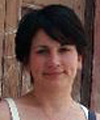 Pamela Espinosa de los Monteros is a graduate student of Library and Information Science at Syracuse University (’13). She holds a B.A. in Interdisciplinary Humanities from the University of San Diego (’06), and is an alumni of the Fulbright-Garcia Robles Fellowship (2010-2011) in Mexico City, Mexico, where she focused on international communication strategies for NGO’s. Topics of research include: information design with a focus on cultural relevancy and optimal presentation methods for diverse communities, and accessibility of information sources for multi-ethnic/multi-lingual users.
Pamela Espinosa de los Monteros is a graduate student of Library and Information Science at Syracuse University (’13). She holds a B.A. in Interdisciplinary Humanities from the University of San Diego (’06), and is an alumni of the Fulbright-Garcia Robles Fellowship (2010-2011) in Mexico City, Mexico, where she focused on international communication strategies for NGO’s. Topics of research include: information design with a focus on cultural relevancy and optimal presentation methods for diverse communities, and accessibility of information sources for multi-ethnic/multi-lingual users.
Yes, but what is it that you do?
Amanda K. Rinehart – Illinois State University
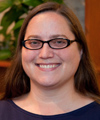 Amanda holds a Masters of Library and Information Science from the University of South Florida and a Masters of Botany and Plant Pathology from Michigan State University. Previously, Amanda was the E-Science Librarian for Brown University, a laboratory/data manager at the US Horticulture Research Laboratory, and the Society of Nematologist’s scholarly communications consultant. She currently manages the Digital and Data Services Department at Illinois State University, including the institutional repository, ISU ReD.
Amanda holds a Masters of Library and Information Science from the University of South Florida and a Masters of Botany and Plant Pathology from Michigan State University. Previously, Amanda was the E-Science Librarian for Brown University, a laboratory/data manager at the US Horticulture Research Laboratory, and the Society of Nematologist’s scholarly communications consultant. She currently manages the Digital and Data Services Department at Illinois State University, including the institutional repository, ISU ReD.Sixteen Students, Fourteen weeks: Building a Digital Library through Collaborative Learning
Kate Thornhill, Emily Powers, Emily Toner, Christina Tanguay, and Chelsea Gunn – Simmons College
Since 2005, the Graduate School of Library and Information Science (GSLIS) at Simmons College has provided students with the opportunity to take part in the creation of a digital library collection highlighting alumni scrapbooks from Simmons College Archives. These projects have been incorporated into the classroom as part of a Digital Libraries course taught by Professor Candy Schwartz. In May 2012, the Paula Kantala McAndrews Scrapbooks became the most recent addition to the Notable Women of Simmons College Digital Scrapbook Collection, after a semester of intensive training and collaboration among the students in the class. The purpose of this poster is to highlight the learning processes that went into the construction of the digital library and the results of the students’ team collaborations. The poster will cover the history of the project, the main aims of coursework, the methods of training and development, and the overall overcome of the project.
As members of the team that created this digital library, we plan to address how library students new to creating a digital library developed workflows, managed a successful technology project, and learned project management skills. The poster will address collaborative processes and the impact of peer-to-peer training on the development of the digital library. During the digital library’s 14-week development period, students acquired specialized knowledge on their committee’s topics as well as gaining a general knowledge of all other aspects of digital libraries.
Professor Schwartz gave guidance when needed but encouraged students to make decisions independently on all aspects of the project, including deadlines, criteria and technical specifications. These methods of constructivist and experiential learning left students with practical experience and a “t-shaped” skill set.
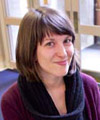 Chelsea Gunn is an archivist living in Providence, RI and received her MLIS with a concentration in archives management from Simmons College in 2012. She served as the project manager for the Paula Kantala McAndrews Digital Library project. In addition Chelsea is interested in metadata, databases, creative collaboration, and using digital tools to bring new audiences to archival materials. She also works as a Field Surveyor for the RHODI Project at the Rhode Island Historical Society.
Chelsea Gunn is an archivist living in Providence, RI and received her MLIS with a concentration in archives management from Simmons College in 2012. She served as the project manager for the Paula Kantala McAndrews Digital Library project. In addition Chelsea is interested in metadata, databases, creative collaboration, and using digital tools to bring new audiences to archival materials. She also works as a Field Surveyor for the RHODI Project at the Rhode Island Historical Society.
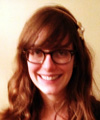 Emily Powers is a Massachusetts native and a MSLIS ’13 candidate at Simmons College GSLIS in Boston. Her areas of interest include web services, digital libraries, special libraries, journalism, and web design and development.
Emily Powers is a Massachusetts native and a MSLIS ’13 candidate at Simmons College GSLIS in Boston. Her areas of interest include web services, digital libraries, special libraries, journalism, and web design and development.
 Christina Tanguay is a lifelong resident of Lowell, Massachusetts. She received her MSLIS from Simmons College in 2012, where she concentrated in Archives Management. Her areas of interest include digital libraries, preservation, and visual materials. Christina worked on the preservation and digitization committees for the Paula Kantala McAndrews Digital Library project. She works as an Archives Assistant at MIT’s Institute Archives and Special Collections.
Christina Tanguay is a lifelong resident of Lowell, Massachusetts. She received her MSLIS from Simmons College in 2012, where she concentrated in Archives Management. Her areas of interest include digital libraries, preservation, and visual materials. Christina worked on the preservation and digitization committees for the Paula Kantala McAndrews Digital Library project. She works as an Archives Assistant at MIT’s Institute Archives and Special Collections.
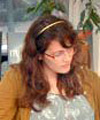 Kate Thornhill is expected to receive her MLIS from Simmons College in December 2013, where her focus has been building digital libraries and institutional repositories and learning about the open movement. She served as chair for the digitization committee for the Paula Kantala McAndrews Digital Library project, supervising the creation of all digital objects for the collection. In addition to school, she works full-time as a Collections Management Assistant for Tufts University Hirsh Health Sciences Library.
Kate Thornhill is expected to receive her MLIS from Simmons College in December 2013, where her focus has been building digital libraries and institutional repositories and learning about the open movement. She served as chair for the digitization committee for the Paula Kantala McAndrews Digital Library project, supervising the creation of all digital objects for the collection. In addition to school, she works full-time as a Collections Management Assistant for Tufts University Hirsh Health Sciences Library.
Emily Toner is expected to receive her MSLIS from Simmons College in December 2012, where her focus has been special collections, digital libraries, and emerging metadata schema. Emily served as the chair of the metadata committee for the Paula Kantala McAndrews Digital Library project, supervising the creation of descriptive metadata for the collection. In addition to school, she works as a library clerk at the Boston Architectural College and as a part-time librarian at the landscape architecture firm, Carol R. Johnson Associates.
Digitizing Don Quixote
Christine Parker, Justin Mancini – Queens College
Digitizing Don Quixote presents a new approach to the digitization of rare books, using the collection of 14 early editions and related works of Don Quixote housed by the Queens College Department of Special Collections and Archives. Our project has been to create an interactive digital experience accessible through the World Wide Web.
Using the open source software Omeka, we have built a content management system for the collection that provides the contextual information necessary to understand the differences between editions. The site uses archival principles of description for rare books, yet also takes advantage of digital technologies to bring fresh, new interactive platforms to users.
Using the 1620, 1864, and 1900 editions as the prototypes, we employed Javascript to design interactive title pages with roll-over text boxes and hyperlinks. These links direct users to a wiki that expands upon the scope and content of select points of interest. Information on the printer, the publisher, and the images can be explored to enhance understanding of the uniqueness of each volume. Users can also choose to zoom in to very fine detail or interact with pages in a more familiar page-turning interface. In the second phase site development, we have added an exhibit layer which places the Don Quixote collection within the larger context of print history. Users can learn how a rare book volume would have been printed through an interactive historical print shop. Geographic locations of significance to particular volumes are presented through a map interface. In addition, all points of connection are tied together in a visual node map where users can browse and explore relationships of context to enrich their experience.
Our goal is to take our editions of Don Quixote beyond the borders of the archive through this digital experience so that users worldwide can explore unique materials in new ways. Rare books are a valuable resource not only to select scholars but to all users interested in the humanities. With this site, we aim to both increase access to our materials and stimulate users of all backgrounds to engage early works in novel digital environments.
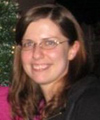 Christine Parker is an emerging professional currently working as both an assistant archivist at Queens College and a reference librarian trainee in the public sector. Her professional interests include library and information studies, archives, and the intersections of digital applications with special collections. She holds a B.A. in Anthropology from Stony Brook University and will receive her M.L.S. from the Queens College Graduate School of Library and Information Studies in February of 2013 along with a certificate in Archives and Preservation of Cultural Materials. Christine serves as the project lead for Digitizing Don Quixote, also known as the Digital Print History project at Queens College. She began work on the project as a Special Collections and Archives Fellow in the fall of 2011 and continues to develop and expand the project’s online content with an eye towards combining effective and meaningful access for rare book collections with an interactive user experience.
Christine Parker is an emerging professional currently working as both an assistant archivist at Queens College and a reference librarian trainee in the public sector. Her professional interests include library and information studies, archives, and the intersections of digital applications with special collections. She holds a B.A. in Anthropology from Stony Brook University and will receive her M.L.S. from the Queens College Graduate School of Library and Information Studies in February of 2013 along with a certificate in Archives and Preservation of Cultural Materials. Christine serves as the project lead for Digitizing Don Quixote, also known as the Digital Print History project at Queens College. She began work on the project as a Special Collections and Archives Fellow in the fall of 2011 and continues to develop and expand the project’s online content with an eye towards combining effective and meaningful access for rare book collections with an interactive user experience.Information Organization in Music Recommendation
Rachel Bloch Shapiro – Special Prize Paper – University of Maryland
National Information Standards Organization (NISO) Guidelines for Good Digital Collections Calculator
Margaret Wilson – University of Oklahoma
The Luke Howard Collection: The Artful Science of Clouds
Christine Wood – University of Oklahoma
The Luke Howard Collection began as a proposal to collect the work of Luke Howard, the early nineteenth century chemist who gave the world the origins of cloud metadata, coining the terms Cumulus, Stratus, Nimbus, and Cirrus. What makes Howard unique is his creation of cloud illustrations to accompany his work, the images that document the phenomena he named. Attempts to locate Howard’s original artwork and papers, and the artwork and literature he inspired, have revealed how one subject crosses many disciplines. A man who may be conveniently categorized under meteorology also has a significant place in English Literature, Art History, the History of Science, and Library Studies.
In English Literature, there is evidence of inspiration for contemporary writers and poets. In Art History, Howard’s work shows how the format and medium fits into the non-professional artwork of the time and how Howard’s works also inspired professional artists. The cloud paintings of artist John Constable are one example of this. He also inspired the poetry of Percy Shelly and Goethe, and the art and writing of John Ruskin (Gale 2012). In the History of Science, his illustrations show how scholars began to understand the natural world. In Library Science, Howard’s cloud metadata became the base for a controlled vocabulary.
Luke Howard’s images are scattered from the Science & Society Picture Library to the Bridgeman Art Library to the Royal Meteorological Society. Fewer than 10 images are available and none of these are accompanied with metadata. Sizes, dates, mediums, locations, and copyright are mostly unknown. Institutions credited with ownership do not have digital archives.
Luke Howard’s fame arises from naming the clouds, but his contributions to art, literature, and history cross many different disciplines. Currently, his collective works are not a collection since they are physically divided into subjects. The value of Howard’s works is better appreciated when viewed as a whole. Each individual discipline can gain from the accumulation of these works as a whole, along with their subject specific metadata.
Digital collections offer the opportunity to transcend individual subjects and physical locations. They can eliminate the busywork of locating known information and allow focus on the interpretation of gathered information. Luke Howard’s paintings may be best preserved in a museum, his books in a library, and his letters in an archive, but a digital collection overcomes these physical limitations and creates a unique body of work.
Luke Howard is just one example of a subject that is bigger than its current manifestations. If created, this collection has the potential to appeal to a broad audience because of the unique relationship its images create between science, history, and art. There is currently no way to evaluate the entire collection and its related objects. A digital collection will connect Howard’s artistic work with artifacts across disciplines.
References
Hamblyn, Richard. 2001. The Invention of Clouds: How an Amateur Meteorologist Forged the Language of the Skies. New York: Farrar, Straus and Giroux.
Gale. 2012. “John Constable.” Gale Encyclopedia of Biography. http://www.answers.com/topic/john-constable
Cloudman. 2012. “Luke Howard- The Godfather of Clouds.” http://www.cloudman.com/luke_howard.htm (accessed April 3, 2012).
Keynote Speaker: Michael Leach
Michael Leach is the Head of Collection Development, Cabot Science Library, at Harvard University. He has worked in science libraries for more than 20 years. In addition, he is an adjunct faculty member at the Simmons Graduate School of Library & Information Science, where he has taught courses on information technology, web publishing, collection development and database management; he is also a PhD candidate at Simmons GSLIS, focusing on digital libraries and the adoption of corporate principles in academic information settings.
Over the past 9 years, Michael has taught over 45 continuing education programs, reaching nearly 600 colleagues, and he has been a frequent speaker at conferences, including annual meetings of ALA, ASIST, ACRL and SLA. He is also a Past-President of the American Society for Information Science & Technology (ASIS&T).
Presentations
Digitizing Don Quixote (Remote)
Christine Parker, Justin Mancini – Honorable Mention Paper – Queens College
Digitizing Don Quixote presents a new approach to the digitization of rare books, using the collection of 14 early editions and related works of Don Quixote housed by the Queens College Department of Special Collections and Archives. Our project has been to create an interactive digital experience accessible through the World Wide Web. Using the open source software Omeka, we have built a content management system for the collection that provides the contextual information necessary to understand the differences between editions. The site uses archival principles of description for rare books, yet also takes advantage of digital technologies to bring fresh, new interactive platforms to users.
Using the 1620, 1864, and 1900 editions as the prototypes, we employed Javascript to design interactive title pages with roll-over text boxes and hyperlinks. These links direct users to a wiki that expands upon the scope and content of select points of interest. Information on the printer, the publisher, and the images can be explored to enhance understanding of the uniqueness of each volume. Users can also choose to zoom in to very fine detail or interact with pages in a more familiar page-turning interface.
In the second phase site development, we have added an exhibit layer which places the Don Quixote collection within the larger context of print history. Users can learn how a rare book volume would have been printed through an interactive historical print shop. Geographic locations of significance to particular volumes are presented through a map interface. In addition, all points of connection are tied together in a visual node map where users can browse and explore relationships of context to enrich their experience.
Our goal is to take our editions of Don Quixote beyond the borders of the archive through this digital experience so that users worldwide can explore unique materials in new ways. Rare books are a valuable resource not only to select scholars but to all users interested in the humanities. With this site, we aim to both increase access to our materials and stimulate users of all backgrounds to engage early works in novel digital environments.
 Christine Parker is an emerging professional currently working as both an assistant archivist at Queens College and a reference librarian trainee in the public sector. Her professional interests include library and information studies, archives, and the intersections of digital applications with special collections. She holds a B.A. in Anthropology from Stony Brook University and will receive her M.L.S. from the Queens College Graduate School of Library and Information Studies in February of 2013 along with a certificate in Archives and Preservation of Cultural Materials. Christine serves as the project lead for Digitizing Don Quixote, also known as the Digital Print History project at Queens College. She began work on the project as a Special Collections and Archives Fellow in the fall of 2011 and continues to develop and expand the project’s online content with an eye towards combining effective and meaningful access for rare book collections with an interactive user experience.
Christine Parker is an emerging professional currently working as both an assistant archivist at Queens College and a reference librarian trainee in the public sector. Her professional interests include library and information studies, archives, and the intersections of digital applications with special collections. She holds a B.A. in Anthropology from Stony Brook University and will receive her M.L.S. from the Queens College Graduate School of Library and Information Studies in February of 2013 along with a certificate in Archives and Preservation of Cultural Materials. Christine serves as the project lead for Digitizing Don Quixote, also known as the Digital Print History project at Queens College. She began work on the project as a Special Collections and Archives Fellow in the fall of 2011 and continues to develop and expand the project’s online content with an eye towards combining effective and meaningful access for rare book collections with an interactive user experience.The Librarian as Programmer: Text Mining (Remote)
Devin Higgins – Best Paper – Michigan State University
 After graduating with a degree in library and information science from the University of Illinois in May 2012, Devin began a position as Digital Library Programmer at Michigan State University the following fall. His current professional interests are in building digital collections that promote user exploration, designing automated data flows, and the digital humanities.
After graduating with a degree in library and information science from the University of Illinois in May 2012, Devin began a position as Digital Library Programmer at Michigan State University the following fall. His current professional interests are in building digital collections that promote user exploration, designing automated data flows, and the digital humanities.New American Heritage: Designing Digital Collections for User Collaboration (Remote)
Charles Macquarie, Charlotte Nicholson, Katherine Pradt, Aimai Reporter, Bruce Shenitz – Pratt Institute
 Charles Macquarie
Charles Macquarie
Charles Macquarie has an undergraduate degree in English and Religious Studies from Lewis & Clark College, and graduated Pratt Institute’s School of Information and Library Science in May of this year. Most of his work so far has been processing collections of personal papers and processing government and organizational records. He is particularly interested in the way digital projects can help to provide new conceptions of the materials in these collections.
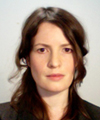 Charlotte Nicholson
Charlotte Nicholson
In spring 2012, Charlotte received her MSLIS from Pratt Institute. During her studies at Pratt she focused on archival theory and practice, specializing in artist archives and digital asset management. Since 2008 Charlotte has worked as the Assistant Archivist for the Esteban Vicente Archives where, among other projects, she implemented the digitization plan for 53 linear feet of analogue documents. In addition she serves as the archival consultant for the Doug Ohlson Estate.
 Katherine Pradt
Katherine Pradt
Katherine received her MSILS from Pratt Institute in 2012. She is primarily interested in user-centered design of digital interfaces for online collections, with a related focus on information architecture and an unavoidable expertise in copyright issues. In addition to her degree from Pratt, Katherine holds an MFA in fiction and poetry from Sarah Lawrence College and a BA in English literature from Yale.
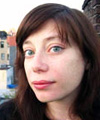 Aimai Reporter
Aimai Reporter
Aimai Reporter is a recent MSILS recipient from Pratt SILS, awarded the silver cord for maintaining a 4.0 average. Her studies focused on Archives & Special Collections and sharing those collections digitally. Her background in commercial & digital photography gave Aimai experience in project management, archiving, and digital asset management, influencing her decision to get her degree. Internships include The New Museum Archive, ICP Robert Capa Archive, & The Thomas J. Watson Library at the Met.
Bruce Shenitz
Bruce has extensive experience as a writer, reporter, and editor for major national newspapers and magazines. He has worked and studied internationally in Taiwan, Hungary, Yugoslavia, the Netherlands, Sweden, and Germany, and was awarded a fellowship from the Knight Foundation to study law from the perspective of a journalist at Yale Law School. He earned his MSLIS from Pratt in 2012, with a focus on taxonomy, cataloging, and information architecture.
“They’re Doing This for Free?”: Using Crowdsourcing as a Way to Generate User Interest and Efficiently Digitize Collections [In-Person]
Fallon Bleich and Mary Michelle Moore – Rutgers University
Fallon Bleich is an MLIS student at Rutgers University [‘13], with a specialization in Digital Libraries. Her previous academic background includes a BA in History from Hendrix College. Fallon is currently the online copresident of the Rutgers ASIS&T group and a circulation assistant at the Bentonville Public Library in Bentonville, Arkansas.
Mary Michelle Moore is an MLIS student at Rutgers University [‘13] with a previous BA in Anthropology from the University of California Los Angeles. She is currently the webmaster for the Rutgers RASL group and a Library Assistant at the University of California-Irvine Library
Conducting a Data Management Audit of a Scientific Research Group [In-Person]
Christopher Eaker and mentors – University of Tennessee-Knoxville
As research-intensive science produces increasingly higher volumes of digital data, managing it with long term preservation in mind is more important than ever. Data management has become an often overlooked practice, taking a backseat to the science it supports (Heidorn, 2011; Carlson, Fosmire, Miller, & Nelson, 2011). Libraries and information science professionals can offer valuable assistance in managing that data, as they, historically, have strong skills related to the access and preservation of information and knowledge, such as classifying, describing, distributing, and storing (Pryor, 2012; Jones, Ball, & Ekmekcioglu, 2008).One such way information science professionals can offer help to their scientific colleagues is by conducting an audit of their data management practices. By conducting an audit, the auditor can identify areas of strength, areas needing improvement, redundant activities, and useful tools. The goal of the data management audit is to increase efficiency and improve data management practices within a research group or project, which will, in turn, support the long term preservation and access of data sets. A data management audit supports the entire lifecycle of data, including Project Planning, Data Collection, Data Analysis, Data Archiving, and Data Distribution and Sharing.
This poster will highlight the skills an information professional needs and demonstrate a practical approach to performing a data management audit. Based on the Digital Curation Centre’s Data Asset Framework (2009) and framed within the data lifecycle, this poster will explain the data management audit process and provide examples of questions asked, data workflow diagrams, and suggestions for improvements. Below are descriptions of the tasks involved in each phase of the audit.
Project Planning
During the project planning phase of the data management audit, the information science professional holds introductory meetings with science project managers. The purpose of these meetings is to determine which groups will be audited and be introduced to project personnel who will be participating in the data management audit. The auditor must obtain Internal Review Board approval, if necessary, before conducting any data gathering interviews.
Data Collection
During the data collection phase, the data collected includes, but is not limited to, surveys of project personnel; internal documents, such as reports and project logs; external documents, such as brochures and websites; and demonstrations of tools.
Data Analysis
The data analysis phase of the data management audit includes processing and analyzing the data collected from the previous phase. Tasks within this phase include transcribing interviews, studying each group’s workflow, and extracting trends and finding gaps in those workflows. Additionally, the auditor should develop a workflow diagram that visualizes and describes the research process in each group audited. Color-coding each phase of the workflow process on the diagram facilitates easy comparison across research groups. Finally, during data analysis, the auditor must consistently consult with project personnel to determine if the workflow diagrams accurately represent the groups’ processes.
Data Distribution & Sharing
Once the analysis is complete, the auditor must produce a final report that outlines key findings and lays out recommendations for improvements. This report is then shared with the project leaders and other project personnel who will determine how to proceed.
Implementation
Implementation of the recommendations contained within the data management audit report is the goal of the data management audit. The recommendations must be useful, reasonable suggestions to improve efficiency, reduce redundancy, and increase quality. Important areas where recommendations may be made include data management planning, metadata, archiving and preservation, and project tracking.
References
Carlson, J., Fosmire, M., Miller, C., & Nelson, M. (2011). “Determining data information literacy needs: A study of students and research faculty.” portal: Libraries and the Academy 11(2), 629-657. The Johns Hopkins University Press.
Heidorn, P. B. (2011). “The emerging role of libraries in data curation and e-science.” Journal of Library Administration, 51(7-8), 662-672. doi: 10.1080/01930826.2011.601269
Jones, S., Ball, A., & Ekmekcioglu, Ç. (2008). “The data management audit framework: A first step in the data management challenge.” International Journal of Digital Curation, 3(2).
Pryor, G. (2012). “Why manage research data?.” In G. Pryor (Ed.), Managing research data (p. 15). London: Facet Publishing.
Plenary Speaker: Dr. June Abbas
Chair, 2010-2011
Dr. June Abbas, PhD, is an Associate Professor in the School of Library and Information Studies (SLIS) at the University of Oklahoma, Norman campus. She obtained her PhD in Information Science from the University of North Texas in 2001 and taught in the Department of Library and Information Studies at the State University of New York in Buffalo from 2001-2008 before joining the SLIS in August 2008. Her research focuses on the development of user-centered digital libraries, institutional repositories, and other knowledge organization structures. She also conducts research on children and teens and their use of technology, and the intersection between information behavior, information retrieval, and structures for organizing knowledge. The courses she teaches include those related to the organization of information and knowledge resources, cataloging and classification, indexing and surrogation, digital collections, and digital information retrieval. She has also served as project manager on seven digital libraries projects and on task forces to develop institutional repositories at two universities. Currently she is Chair of the ALA RDA Programming and Forums Taskforce
Credits
Special thanks to the 2011-2012 and 2012-2013 officers of SIG Digital Libraries for all their help and support.

